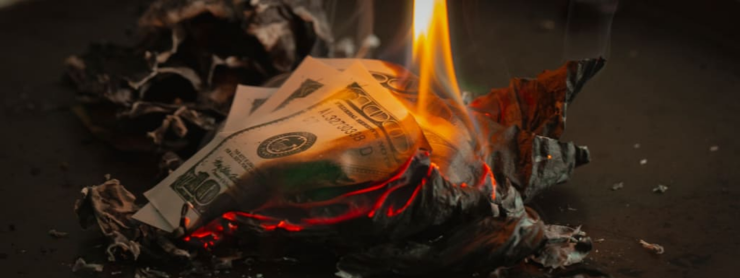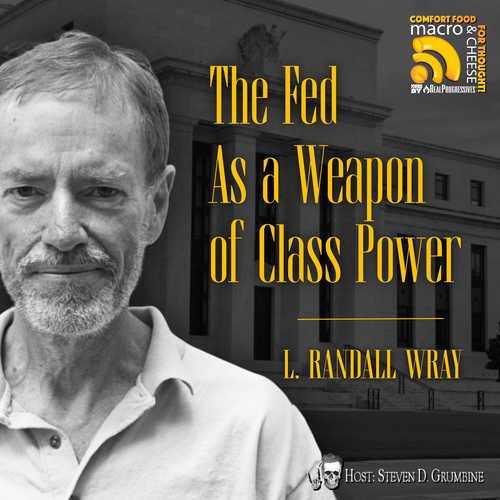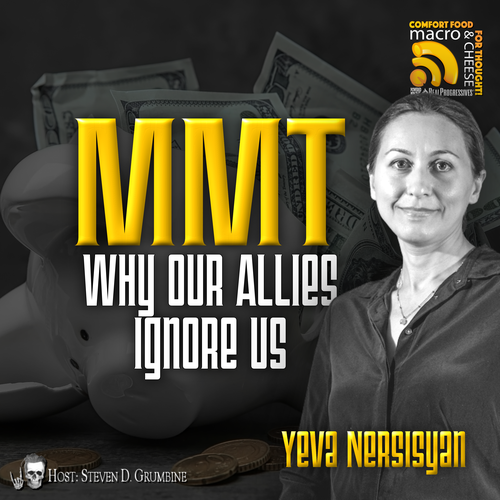Originally posted on December 13, 2011 at the New Economic Perspectives blog.
As I reported over at Great Leap Forward, a new study by two UMKC PhD students, Nicola Matthews and James Felkerson, provides the most comprehensive examination yet of the Fed’s bail-out of Wall Street. They found that the true total cumulative amount lent and spent on asset purchases was $29 trillion. That is $29,000,000,000,000. Lots of zeros. The number is quite a bit bigger than previous estimates. You can read the first of what will be a series of reports on their study here: I want to be clear that this is a cumulative total—and for reasons I will discuss in this post it is the best measure if we want to understand the monumental Fed effort to restore Wall Street to its pre-crisis 2007 glory. It is certain that no government anywhere, ever, has committed so much to benefit so few. Wall Street owes the Fed a big fat wet kiss. That’s a kiss Chairman Bernanke apparently does not want. Last week he extended the Fed’s veil of secrecy over its bail-out of Wall Street by trying to counter a recent Bloomberg analysis of the extent of the Fed’s largess with a fog of deceit.
Apparently the Chairman forgot the lesson we learned from Watergate: the cover-up is always worse than the original indiscretion. Bloomberg had found that the Fed committed $7.77 trillion to the biggest banks. Bernanke provided a memo that claimed the real total was only $1.2 trillion. The memo went on to argue that much of the Fed’s lending benefitted small banks, recipients of student loans, and even manufacturing firms like Harley Davidson. Finally, it claimed that throughout the bail-out, the Fed’s actions were transparent, with Congress continually updated on the Fed’s actions. It was quite a performance, reminiscent of the kind of misleading statements the previous Chairman, Alan Greenspan, made before the House under interrogation by the late, great, Representative Henry B. Gonzalez. Gonzalez—trying to shine a bit of light into the Fed’s secret meetings—asked whether the Fed kept tapes of its FOMC meetings (shades of Watergate). Greenspan fibbed, answering “no”. Realizing that it is not a good idea to lie to Congress, he went back to the office, convened a conference phone call of Fed officials and warned them that they likely all would be called before Gonzalez’s committee. He said it would be up to them to decide to tell the truth, or to continue the charade.
You see, the Fed did tape every meeting and had been doing so since the days of Watergate; but the tapes were transcribed and then (supposedly) erased and used for subsequent recordings. In the end, the Fed decided to tell Congress the truth, and agreed to release edited transcripts within 5 years. Soon some generous interpretation, Greenspan’s fib was not a lie. You can now read them on-line. (See the FOMC transcripts the period from October 1993 to May 1994 for discussions surrounding the wisdom of operating with greater openness—and for fascinating internal discussions about how to deal with González and Congress; see also my article.) However—and this is a real scandal—the Fed is routinely shredding all the original transcripts (only the edited versions are available). You see, the Fed claims that because it is “independent”, it is not subject to normal sunshine laws that require maintaining government records. And its meetings that discuss monetary policy and bank supervision are also exempt from sunshine, according to the Fed.
But that is a topic for another day even though it should be infuriating to Congress. Let us get back to Bernanke’s 29 trillion dollar white lie. First, it simply is not true that the Fed willingly provided information on the bail-out to Congress. In fact, Bernanke repeatedly refused to provide anything to Congress regarding what the Fed was doing in secret behind closed doors. It took a courageous effort by Senator Bernie Sanders to force the Fed to release information, as Bernanke fought tooth and nail to keep all its dealings secret. (See Mat Stoller’s excellent piece that describes the whole effort to fight back by the Fed and its stooges)
Even after Senator Sanders’ amendment to require an audit won—on a 96 to 0 vote in the Senate–the Fed released only aggregated data, making it impossible to identify the Fed’s chosen winners. But once Senator Sanders got that data released, Bloomberg was able to put together a successful Freedom of Information Act lawsuit to force the Fed to release data on bail-outs given to individual institutions. Still, it was provided in a way that made it as difficult as possible to total amounts provided—so Bloomberg helped enormously by putting the data into a usable format. That is what has led several groups of researchers to finally begin to analyze exactly what the Fed did—including researchers at UMKC. And what the Fed did stinks to high heavens. It would be hard to find any action by any governmental agency in history that has provided more benefit to a handful of favored institutions and individuals. Matt Taibbi has identified the “Real Wives of Wall Street” who got non-recourse low interest loans so that they could reap huge risk-free benefits. The GAO totaled the Fed’s bail-out at $16 trillion (but this excluded some of the Fed’s special facilities, most notably its emergency loans to foreign central banks—including loans to prop-up Colonel Gaddafi’s central bank, as discussed below).
The Fed lent to its member banks but also went far beyond that to lend to domestic shadow banks as well as foreign governments. And at Senator Sander’s request, the Congressional Research Service investigated the direct subsidy given to the biggest banks, as the Fed provided near-zero interest rates so that they could play the yield curve, buying Treasuries. As the Senator said, “This report confirms that ultra-low interest loans provided by the Federal Reserve during the financial crisis turned out to be direct corporate welfare to big banks.” The recent Bloomberg estimated the subsidy to large banks at $13 billion. Others have come up with bigger numbers—Ed Kane estimates it at more than $300 billion annually. Chairman Bernanke responded with a letter to both the House and the Senate objecting to these findings. He then attached an unsigned memo to counter the findings. (see here) It is actually a strange memo, as Felix Salmon argues. Presumably, Bernanke wanted to maintain some distance from the unsigned memo—following Ollie North’s “plausible deniability” tactic–if it was found to be materially misleading or just downright dishonest, he could object that he never really endorsed it. As Greenspan understood, it is not a good idea to lie to Congress.
In any case, a central conceit of the memo is that the Fed never had more than $1.2 trillion in loans outstanding at any point in time. It claims that the higher estimates provided by others come from “egregious errors”, likely by using a cumulative measure. That is, instead of taking the peak lending at an instant of time, others have added up across a series of revolving loans. The memo goes on with a neat little analogy. Say you purchase a house with a mortgage of $200,000; but later you refinance themortgage—retiring the original and taking out another $200,000 mortgage (on more favorable terms). Then if we total the two loans, we get total lending of$400,000. Obviously that would be a highly misleading measure of how much you borrowed from your bank. True enough, but it is not a relevant example. Over at my GLF blog, I provided a more telling analogy. Say you’ve got six drunk bankers at the bar (named Goldman, Morgan, Stanley, Fargo, Citi, and BoA, for example). Each has a shot glass that Ben the bartender keeps filled. Bernanke would say that Ben the bar-keep has only provided six ounces of booze since there is never more than six full glasses at any point in time. Ben fills the glasses, oh, 29 trillion times over the course of three years. Still, Bernanke claims Ben never contributed to the drunkenness of bankers since he never provided more than six ounces of booze at a time. Obviously, it is not the relevant measure of the Fed’s contribution to drunken bankers. Claiming that the Fed “only” lent $1.2 trillion maximum at any particular instant over the past three years does not tell us much. Nor does it really reflect the way the banks view the matter.
You see, bankers look at Fed lending the way a drunk looks at a free shot glass of whiskey. It fuels the drunk. Don’t take my word for it. A banker put it to me this way: “I was buying short term securities that yielded about 12%. My choices of funding were CDs at 0.5% and the Fed at 0.35%, so I funded at the Fed. I funded my bank’s $80 million of AAA 9 month CMBS securities at the Fed. I could have used FDIC insured deposits but the Fed was a tad cheaper. Banks use the cheapest funding available.” To translate that: banks could have funded commercial mortgage backed securities with certificates of deposit insured by the FDIC, or by borrowing using the Fed’s special facilities. But bankers aren’t dumb; well, OK they are dumb, but they aren’t that dumb: They know better than to look a gift horse in the mouth. As Senator Sanders argued, the Fed’s special facilities gave them the cheapest funding available – as the bankers acknowledge. And the Fed very nicely extended the cheapest funding to the Real Housewives of Wall Street, foreign banks and central banks, hedge fund managers, and – apparently – just about anyone among the top 1% who wanted a cheap loan. (One recalls Representative Charles Rangell’s comment when he found out about special deals the old Resolution Trust Corporation was handing out to President Bush’s (senior) pals: why is it only white folks that get these deals?) Now I want to be fair to bankers—at least to the honest ones in the bottom 4,990 of our 5,000 banks, since the top ten banks seem to be run as what my colleague Bill Black calls control frauds. If the Fed offers the lowest cost of funding, you go to the Fed to fund your position in assets. And you make out like a bandit when you can fund at 0.35% and earn 12%.
How can you blame them? No, you must blame the Fed. The Fed is not supposed to be the low cost source of bank funding—something Bernanke well understands. As Walter Bagehot proclaimed more than a century ago, in a crisis the Fed must act as a lender of last resort, but that lending MUST be expensive and temporary. Nowhere in the Fed’s mandate did Congress tell it to act as the lowest cost source of funding. Perhaps that would be a good policy, worthy of Congressional consideration. But I’m pretty darned sure that Congress will be horrified to find that the Fed has unilaterally adopted this as its third mandate (alongside price stability and high employment). By contrast, Congress did explicitly decide to subsidize bank funding when it created the FDIC. By guaranteeing bank deposits, Congress let banks fund by issuing liabilities that are essentially as safe as government IOUs (and, indeed, since the Treasury stands behind them, they are effectively Uncle Sam’s IOUs). As the banker told me, banks had the choice of using the Congressionally-supplied subsidy on insured deposits, or the Fed’s subsidy on lending through its special “emergency” facilities. They chose the Fed’s bigger subsidy as the cheaper option. An option never approved by Congress. An option that is not within the Fed’s legal mandate. An option that the Fed should never provide.
But it did. It made $29 trillion worth of lending plus asset purchases. The cumulative total is a good—indeed, precise—measure of the amount of these “emergency” interventions to help financial institutions. And it went on for three years–even four—with “lender of last resort” low cost funding. And note that the Fed’s subsidized funding of banks puts the Treasury at the same risk that FDIC-insured deposits put Uncle Sam. If a bank goes under, the insured deposits are covered by the FDIC and backed by the Treasury. And if the banks’ borrowing from the Fed had gone bad, causing Fed losses, the Treasury would have taken the hit. This is because the Fed pays profits to the Treasury and if profits disappear (and, worse, if losses are incurred) it is the Treasury that takes the loss. (Update: An anonymous blogger sent me the following email, which I have not been able to check out. It seems to strengthen my claim since the losses go directly to the Treasury: “In terms of accounting, the Fed changed its rules this past January to free itself from worrying about solvency. The change essentially allows the Fed to denote losses by the various regional reserve banks that make up the Fed system as a liability to the Treasury rather than a hit to its capital. It would then simply direct future profits from Fed operations toward that liability… “Any future losses the Fed may incur will now show up as a negative liability as opposed to a reduction in Fed capital, thereby making a negative capital situation technically impossible,” said Brian Smedley, a rates strategist at Bank Merrill Lynch, and a former New York Fed staffer. Paying back the negative liability could impact future Fed earnings rebates to Treasury (though the Fed governors could, and as a political matter, probably would continue paying the rebate). But beyond that point, Treasury’s negative capital position would be noncollectable and exempt from the debt ceiling. So it’s like loading debt onto a rocket and shooting it into the Sun.”) Now, Bernanke’s memo claims that the Fed did not suffer losses, indeed, made profits on the loans. This appears to be almost true—there are still outstanding Fed commitments (loans and assets purchased under various facilities amounting to almost a trillion dollars), including some really nasty ones due to the AIG fiasco, so we won’t actually know for some time.
But let us say that once all the commitments are wound down, the Fed really does reap profits. Does that validate ex post what the Fed did? Of course not. Clearly, things could have gone the other way. And they still might. You don’t hand those six drunk bankers the keys to their cars and then congratulate yourself if they manage to drive home without an accident. No, you count yourself stupid lucky.
Here’s the question. Can we continue to rely on stupid lucky policy at the Fed? After pouring $29 trillion into the glasses of drunken bankers, is it time to rethink the role of the Fed? Is it proper for the Fed to be the lowest cost source of booze to fuel the drunks on Wall Street? Will we just let the Fed do this until the drunks wreck their cars?
Oh, wait a minute—didn’t they just wreck the whole global economy? Are we going to let the Fed help them to do it again? Now why do the banks need cheap Fed whiskey? Because there aren’t enough insured deposits to finance bank positions in all the toxic waste assets they created. Before the GFC, they funded those risky positions in “markets”—by issuing uninsured liabilities (uninsured deposits, short-term commercial paper, and other subordinated debt). But “markets” got wise to the fact that bank assets were trash, so they refused to continue to provide funding. It took $29 trillion of Fed lending and trashy asset purchases to keep the banks funded. The way the banks looked at this was as a source of cheap, continuous funding that could be rolled-over as necessary—$29 trillion worth. And with no market discipline and not even superficial supervision by the Fed that played the role of dupe of last resort. And that is why $29 trillion is the right number to use. It is the total commitment required by the Fed to save Wall Street. So far. After my blogs and the release of Felkerson’s working paper at Levy we got a lot of expected push-back by market insiders and economists with strong links to the Fed. For example, James Hamilton (who admits to working for the Fed for the past 20 years—one of the many economists around the country who are in the Fed’s stable of economists whose research is regularly funded) criticized us as follows: “Felkerson takes the gross new lending under the Term Auction Facility each week from 2007 to 2010 and adds these numbers together to arrive at a cumulative total that comes to $3.8 trillion. To make the number sound big, of course you want to count only the money going out and pay no attention to the rate at which it is coming back in. If instead you were to take the net new lending under the TAF each weekover this period– that is, subtract each week’s loan repayment from that week’s new loan issue– and add those net loan amounts together across all weeks, you would arrive at a cumulative total that equals exactly zero. The number is zero because every loan was repaid, and there are no loans currently outstanding under this program. But zero isn’t quite as fun a number with which to try to rouse the rabble.”
Note the very nice characterization of Fed critics as “rabble”. Hamilton and Fed-funded insiders try very hard to claim that anyone who would criticize the Fed’s bailout is incompetent, unable to tell the difference between a stock and a flow.
His use of the word “rabble” to describe me and fellow critics is yet another example of the way the top 1% and its sycophants look at the rest of us—the 99%. Hamilton’s statement reminds me of a talk my colleague Bill Black gave the other day at UMKC on Citigroup’s infamous “Plutonomy Memo” to its richest clients, celebrating the rising inequality of US society. Or the internal emails at the ratings agencies joking that they might as well have cows do the credit ratings on securitized crap.
It’s really nice to get a window on the way that Hamilton views us– “rabble” 99 percenters. Personally, I like the label—let’s wear it.
Also note how silly Hamilton’s argument is: net lending is zero on loans that are rolled-over, hence we must logically conclude that the Fed actually lent nothing, did not bail-out financial institutions, and that Wall Street resolved its problems with no help from the Fed at all! Nice hat trick, rabbit! The insiders really know how to manipulate the facts. Another critic who does not have the guts to use his/her real name but uses the handle “Alea” sticks very close to talking points: “You (and your students) still don’t get the difference between “Term Adjusted” and “Not Term Adjusted”. On a “Not Term Adjusted” basis (the way GAO gets $ 16 trillion and $26 trillion with swaps) a bank borrowing $1 bln for a one year term counts for less than one that borrows $1 bln overnight rolled over twice, that’s absurd. These loans aren’t cumulative, they are rolled over (paid back at the end of each term).” She or he has repeated this mantra at several blog sites. Look, we get it. But this is a bait and switch complaint. Banks facing a liquidity shortage should have access for overnight lending at the Fed—say, $1 billion, due tomorrow, at a penalty rate. And maybe they need to roll it over a night or two. But the Fed is NOT supposed to lend for a year! This is emergency lending, after all. It is supposed to be temporary and expensive. But in fact, the Fed lent “overnight” on a repeated, chronic basis because banks could not fund themselves in markets at the interest rate they desired. So the Fed “accommodated” by pouring the cheap whiskey over and over and over—for weeks, months, even years on end.
To get a measure of this chronic abuse of overnight lender-of-last-resort facilities it does make sense to add up across the loans. That is a far better measure of the extent of the Fed’s efforts to bail out troubled banks—who should be expected to fund themselves in markets, not at the lender-of-last-resort! I love the comments by a self-described “liberal” who goes by the pseudonym “rjw.progressive”: “I’d be really curious to learn where you learned your banking stuff from. I didn’t see anything especially banking related on your CV…. Maybe things have changed big time since I practiced banking law (corporate and int’l lending, trade finance and reg comp, mainly) from the 70s to 90s for a money center and then super-regional bank, but I suspect not when it comes to the basics. For the purpose of analyzing banking and the Fed’s support thereof, do you understand that there are significant differences between secured lending and unsecured lending? Between those sorts of lending and commercial paper facilities? And between those and currency swap facilities?” Sniff, sniff. Yes, right, I never worked for the Fed or for a money center bank. I think I pretty much screwed the pooch so far as those career options go when I co-wrote an article back in 1994 arguing that Chairman Greenspan was “flying blind”. And I don’t think BofA has been too thrilled with recent pieces I wrote with my colleague Bill Black about its foreclosure frauds.
I learned my “banking stuff” from Hyman Minsky and have published many scholarly articles on money and banking, but I never aspired to shill for the Fed or Goldman. In any case, the relevant question about “secured lending” is: secured by what? Trash rated Triple A by S&P’s “cows”? How’s that working out for y’all? And on the “currency swap facilities”, this was dollar lending by the Fed against foreign exchange, with the borrowers promising to repay in dollars at a fixed exchange rate. Therefore, no risk to the Fed. Right! Wanna buy a Brooklyn bridge? Peak exposure in the currency “swaps” was nearly $3 trillion, and total cumulative “swaps” were $10 trillion. These “central bank liquidity swaps” actually do too much risk because the foreign central bank only promises to deliver its own currency to the Fed (the Fed credits the foreign central bank’s account with dollar reserves; the foreign central bank credits the Fed’s account with foreign currency reserves; and the deal is unwound by the Fed debiting the dollar reserves and the foreign central bank debiting the Fed’s foreign currency account). The idea is that a foreign central bank could always credit the Fed’s account with the foreign currency reserves, so risk is small.
This is true. It is the foreign central bank that takes counterparty risk in dollars—as it lends dollars to private banks—and even if it takes a loss that does not hinder its ability to pay the Fed in the foreign currency.
The only significant risk is that the foreign central bank might simply decide to tell the Fed to take a hike.
That is admittedly not very likely, especially since most of the Fed’s lending was to the ECB. If the Fed lends to Greece, then there is indeed risk because if Greece leaves the EMU it is not likely to pay promised euros to the Fed. Or, if the Fed lent to an irresponsible government facing very high inflation (Zimbabwe, anyone?) it might refuse to pay the promised gazillions of domestic currency due to maintain a fixed exchange rate in a rapidly depreciating currency. To be sure, the Fed did not make any Zimbabwe loans, but the Fed did lend to “Arab Banking, the Bahrain-based lender that at the time was backed by Libya and the sovereign wealth funds of Abu Dhabi and Kuwait”. According to Senator Sanders, the Fed lent $26 billion to an intermediary for Libya’s central bank. Now let me see—is there any reason that Col. Moammar Gadhafi’s central bank might possibly default on a commitment to one of the Fed’s debtors? Heck, I cannot think of any. He’s one of President Obama’s buddies, isn’t he? Well, until he met an unfortunate end.
Further, the frequent claim that the Fed only lent to healthy banks and on good collateral is belied by the following: “Dexia of Belgium and Depfa of Germany, two bailed-out European institutions, took $50 billion in loans on a single day in October 2008 when the interbank lending market seized up”. Dexia? No risk there, right? Nice well-run institution worthy of the trust of our Fed. Many justify the Fed’s lending on the argument that things turned out more-or-less OK. Even Gadhafi made good. But like the drunks with car keys, that is ex post justification. The ex ante risk was real. To be clear, even if no risks were taken and even if the Fed makes profits on every single deal it made, I would still object that the Fed has no business lending to Gadhafi. Or Dexia. Or any insolvent US bank. Or any solvent US bank on a continuing basis. Or any solvent bank on concessionary terms. The Fed is supposed to operate in the public interest. The American public, that is. Including the 99% “rabble.”
Emergency lender-of-last resort lending to US member banks is clearly in the public interest. On a temporary basis, at a penalty interest rate. After that, if the troubled bank cannot find market funding, it should be resolved. As Edward Kane, a well-known and respected banking scholar argues: “Lending to zombies is a little like the halfcourt shot in basketball.” “It’s nice when it pays off, but it’s not always going to go in.” He played a role back during the resolution of the thrift crisis in helping push through “prompt corrective action” as the required procedure for dealing with problem banks. We are going on the fourth year of “halfcourt shots” by the Fed. Indeed, the Fed has just renewed its lending to foreign central banks, mostly to help out Euroland. That’s right—since the ECB will not step up to rescue its PIIGS, the Fed has decided it will become the lender of last resort. How chivalrous.
To be clear, my complaint is not really about risk exposure. Yes, the Fed can lend trillions of dollars and it can buy trillions of dollars of dodgy assets through “keystrokes” as Bernanke (rightly) calls them. And if the Fed loses trillions on its bets, these can be covered over by trillions of dollars of bail-outs by the US Treasury. There is no limit to the Treasury’s ability to paper over Fed losses. It is a sovereign issuer of the currency, as all MMTers understand. But in the US we have a Congress that is panicking about a couple of billion dollars of spending here and there on programs that benefit unemployed Americans, poor families with children, and veteran’s benefits. How will it react to news of Bernanke’s losses should attempts to prop up foreign central banks, and Wall Street banks, and various loans to individuals including “Christy Mack, the wife of Morgan Stanley’s John Mack, billionaire businessman H. Wayne Huizenga; and Michael Dell, co-founder of Dell Computer, hedge fund manager John Paulson and private equity honcho J. Christopher Flowers” turn out badly?
Well, I think they are going to be outraged and they are going to ask why noone raised alarm bells about a Fed running amuck. And it ain’t just crazy bloggers who accuse the Fed of bad behavior. Senator Sanders had the Government Accountability Office investigate the Fed; after reviewing the resulting report he found that: the GAO detailed instance after instance of top executives of corporations and financial institutions using their influence as Federal Reserve directors to financially benefit their firms, and, in at least one instance, themselves. “Clearly it is unacceptable for so few people to wield so much unchecked power,” Sanders said. “Not only do they run the banks, they run the institutions that regulate the banks.” Big losses at the Fed would be a public relations disaster, at best. It would likely lead to a huge political reaction against the Fed. So while credit risk to the Fed should not be the major reason for objecting to what the Fed did, it should be of some concern.
Congress should immediately call Chairman Bernanke in for testimony on the veracity of the Fed’s response to the Bloomberg report. It should demand a comprehensive accounting for all the Fed’s commitments, by institution that benefitted. Bernanke should explain what the Fed did, when it did it, why it did it, and in whose interests it has been operating since the GFC began. No more obfuscation. No more secrecy. No more fog of deceit. And it should make the Fed subject to sunshine laws. There is no excuse for destruction of transcripts. There is no excuse for secrecy about actions taken 3 years ago. Release all the information. Answer all questions. Truthfully, openly, completely. Or Congress should shut the Fed down. The notion that release of the Fed’s secret information will shake markets no longer holds water. The cat is out of the bag—the continued cover-up is destroying trust, not only in the Fed and in our banks but in our markets, our government, our economy.









